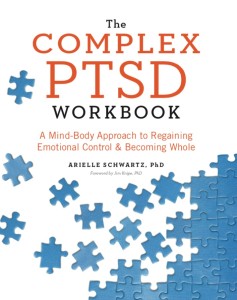The Body’s Wisdom

Like most of us, I can become disconnected sometimes. For example, when I spend too much time at my computer; after a while I can find it difficult to sense and feel my body (ironically, this occurs even when I am writing about embodiment).
The truth is, it is easy to disconnect from the sensations of our bodies. Why? We are simply taught to forget. Western culture values the intellect—thoughts, judgments, verbal analysis, mathematical abilities, and logic. It is unusual to go to school and have a teacher ask, “what are you sensing in your body?” Rather, most of us were trained to be “good” by sitting still and paying attention to external sources of information. At home, we adhered to family rules and rhythms. Sometimes these external rhythms do not match our personal sensations but we learn to adjust. In situations of traumatic neglect or abuse, you might have had to disconnect from your body to survive.
In therapy, a traditional approach emphasizes verbal processing and cognitive meaning making (talk therapy). However, somatic therapy helps you access additional pathways for healing by focusing attention on the embodied experiences that coincide with the verbal exchange. Somatic psychology centralizes body awareness as a primary healing agent in psychotherapy; taking the therapeutic experience beyond where words can take the client. This allows you to focus on unwinding the stories held within the body.
“Embodiment is the practice of attending to your sensations. Awareness of your body serves as a guiding compass to help you feel more in charge of the course of your life. Somatic awareness provides a foundation for empathy, helps you make healthy decisions, and gives important feedback about your relationships with others. Embodiment in somatic psychology applies mindfulness and movement practices to awaken body awareness as a tool for healing.”
-Dr. Arielle Schwartz
What is Embodiment?

How we think and feel influences how we move in the world, and how we move in the world influences how we think and feel. This bi-directional feedback loop shapes our perceptions of ourselves and the world. Our family, social, and cultural norms guide patterns of emotional expression and behavior. Thus, embodiment is socially and culturally determined.
Embodiment is cultivated through reflective awareness of sensations in the present moment. Embodiment is an integration of three sensory feedback systems—exteroception, proprioception, and interoception. Let’s take a closer look:
- Exteroception refers to the sensory experience of the external environment facilitated by sensory neurons which travel from the periphery of the body (eyes, ears, nose, tongue, skin) to the brain. This can include sights, sounds, smell, tastes and sensations of touch such as the feeling of clothing touching the skin.
- Proprioception refers to the sensory feedback about the position of the body as related to gravity. This awareness includes knowing if you are sitting upright, leaning to the side, or maintaining balance while standing or walking. Proprioception is facilitated by neurons that bring sensory information from the joints of the body and inner ear to the brain.
- Interoception involves the sensory experience of the internal body. This can include a sense of hunger, thirst, sleepiness, alertness, body temperature, tension, pain, or restlessness. Interoception provides feedback about the inner emotional experience facilitated by sensory neurons that bring information from muscles, organs, and connective tissue to the brain.
These three sensory feedback systems create a felt sense of self. Within somatic psychology, embodiment can be developed through mindfulness practices that are inclusive of body awareness. Listening to the body becomes a core element of healing.
The Neuroscience of Embodiment

Your body sensations provide a recognizable sense of self. This “body landscape” provides the horizon from which we experience the temporary rise and fall of emotions. Emotions and sensations then serve as a guiding compass to help us sense our moment-by-moment experiences. The practice of embodiment informs all of our interactions throughout each day. For example, you sense your own internal sensations and notices your response as you interact with another person. Over time, your exchanges provide you with a sense of how it might feel to be that person—albeit perceived within the lens of your own subjective experience. When you approach your felt experience of “other” with curiosity and openness, your body awareness can serve as the root of empathy.
Embodiment plays an important role when it comes to making healthy decisions. Neuroscientist and author, Antonio Damasio coined the term “somatic marker hypothesis” to describe the process by which emotions and sensations are learning mechanisms that can be used to predict future outcomes. Damasio suggests that reflective awareness of interoceptive and proprioceptive feedback informs our experience of emotions. Individuals with damage to the part of the brain that is responsible for self-reflection on somatic sensations suffered with a lack of discernment that impaired their ability to make healthy life decisions. As a result, these individuals lacked impulse control, were focused on immediate gratification, and experienced deficits in social relationships.
Embodiment in Somatic Psychology

Embodiment in psychotherapy invites you to reconnect to your sensations as part of the healing process. Sensory information helps to guide not only the therapeutic process but also the quality of rapport within the therapist-client relationship. Embodied awareness helps the therapist attune to the client. For example, a therapist witnessing a client observes the client’s facial expressions and body language. This therapist then senses his or her own internal sensations and notices a response to the client. Sensing a heaviness in the chest, the therapist notices the urge to take a deeper breath. As the therapist listens to the verbal narrative of the client and observes whether the internal felt experience is congruent with what the client is saying. At this point, the therapist asks the client to notice his or her sensations and body awareness. This process opens a dialogue about the embodied experience in the room.
An Embodiment Practice

Take a moment and check in. What do you feel inside of your body? Notice your breath, your heart rate, or any areas of tension. Are you thirsty or hungry? Are you cool or warm? Do you feel awake or tired? Are you sitting up tall or slumped in your chair? Are you aware of any emotions? Where do you sense these emotions in your body?
As you reflect upon your answers to these questions you might notice the desire to move, change your posture, have a sip of water, eat a snack, or grab a sweater. When you sense and feel your body you are able to take actions that help you care for your needs. This is self-regulation; a process of responding effectively to emotions or arousal states that you sense in your body. If you ignore your sensations, you are more likely to override your needs and with time you can start to feel unbalanced, anxious, or out of control. Train yourself to check-in with your sensations on a regular basis to better track what you are aware of and what you need to stay in balance.
Heal and Learn with Dr. Arielle Schwartz
Through the end of December 2018, you can order the EMDR Therapy and Somatic Psychology book directly from W. W. Norton at a 20% discount with free shipping. The coupon code is EMDRSP18 — Click here to order.

Looking for a mind-body approach to healing C-PTSD?

Connect to this post? The Complex PTSD Workbook, is available on Amazon. Click here to increase your toolbox for healing. Whether you are a client or a therapist this book will offer a guided approach to trauma recovery.
About Dr. Arielle Schwartz

Dr. Arielle Schwartz is a licensed clinical psychologist, wife, and mother in Boulder, CO. She offers trainings for therapists, maintains a private practice, and has passions for the outdoors, yoga, and writing. Dr. Schwartz is the author of The Complex PTSD Workbook: A Mind-Body Approach to Regaining Emotional Control and Becoming Whole. She is the developer of Resilience-Informed Therapy which applies research on trauma recovery to form a strength-based, trauma treatment model that includes Eye Movement Desensitization and Reprocessing (EMDR), somatic (body-centered) psychology and time-tested relational psychotherapy. Like Dr. Arielle Schwartz on Facebook, follow her on Linkedin and sign up for email updates to stay up to date with all her posts.








